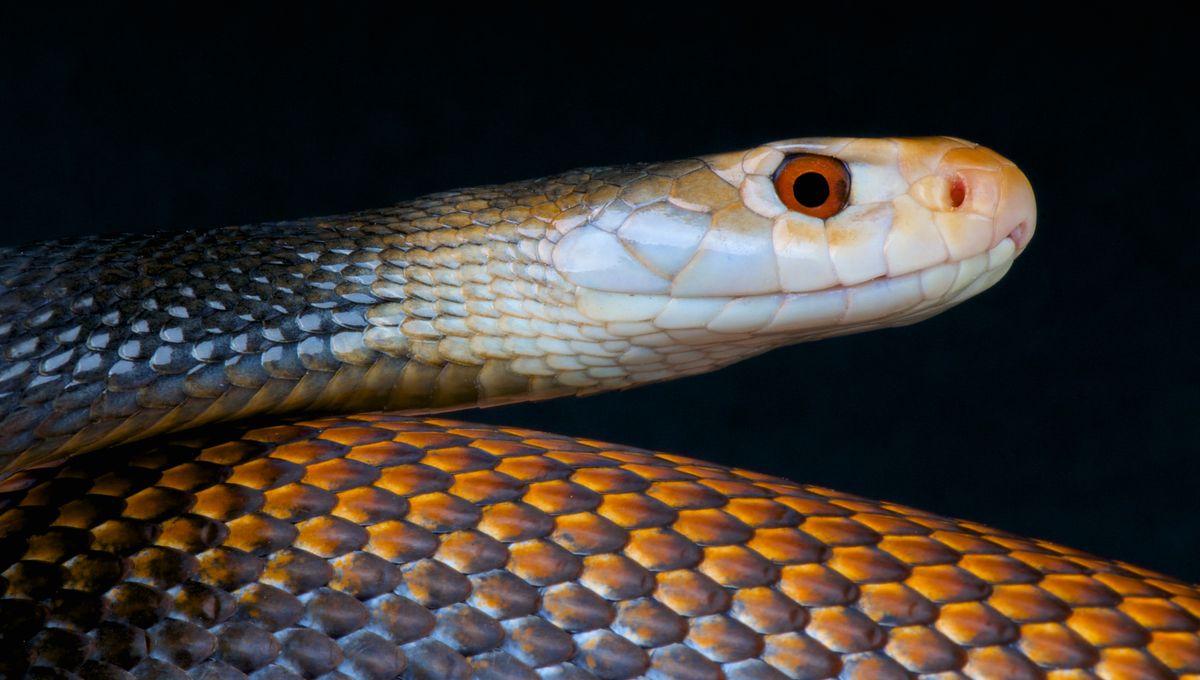
A study into the surprisingly complex mechanisms behind snakes’ ability to hear has found that, despite previous assumptions, many snakes are capable of hearing airborne sounds as well as sensing ground vibrations.
As snakes lack an external ear, it’s been widely accepted that they only sense soundwaves through ground vibrations via their belly scales. While this still appears to be the case, new research by a team at The University of Queensland has found some species also seem to react to sounds traveling through the air.
The team conducted 304 experiments on 19 captive-bred Australian snakes spanning five genera (Acanthophis, Aspidites, Hoplocephalus, Oxyuranus, and Pseudonaja). The sample included arboreal and terrestrial snakes, as well as heavy-body constrictors and smaller venomous species.
In a cleverly constructed laboratory space, they were able to monitor even minor reactions to the varying Hertz sounds presented, while still ensuring the researchers remained at a safe distance from some of their more questionable subject choices, like the coastal taipan, the world’s third most venomous snake species.
By playing the sounds from different parts of the experimental enclosure, the team coded for nine snake behaviors that could indicate auditory reactions. Of the species studied, all displayed genus-specific reactions to airborne noises.
While all species were observed moving away from the sound, woma pythons (Aspidites) were the only ones that seemed to move towards the source of the noise.
“Woma pythons are large nocturnal snakes with fewer predators than smaller species and probably don’t need to be as cautious, so they tended to approach sound,” lead author of the study Dr Christine Zdenek said of this interesting observation in a statement.
These genus-specific behaviors were also observed in the reactions of Taipans (Oxyuranus), which were seen exhibiting significantly more cautious and defensive behaviors to the airborne sounds. As Dr Zdenek theorized: “taipans may have to worry about raptor predators and they also actively pursue their prey, so their senses seem to be much more sensitive.”
The researchers estimate that genus identity explained more than 88 percent of sound reaction behaviors. However, a significant 3.6 percent was dependent on the Hertz frequency of the sound, with different reactionary behaviors being exhibited dependent on whether the sound was airborne or traveling through ground vibrations.
While the exact function of this capability is still unclear, the animals used in the study appeared to show differing reactions to the noises depending on the species. This suggests their hearing abilities have adapted to fit species-specific needs and behaviors.
With little known about how snakes traverse their environments, further research into snake behaviors hopes to shed light on this misunderstood animal.
The paper was published in PLOS ONE.
Source Link: Snakes Can Listen Surprisingly Well, And Some Are More Timid Than Others